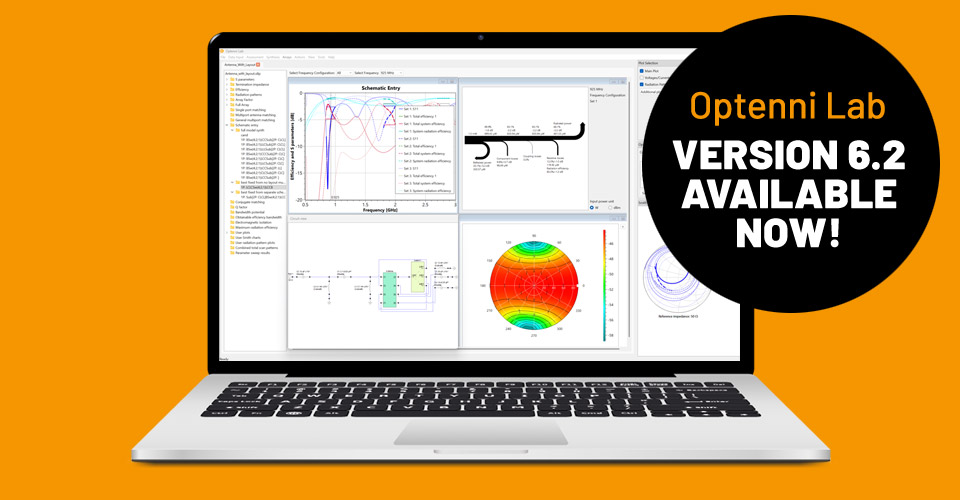
Design Flow
Optenni Lab’s design flow consists of the four main steps:
1. Data Input – Configuration of input data
2. Assessment – Initial analysis to reveal the potential of the system at hand
3. Synthesis – Configuration and execution of synthesis tasks
4. Analysis – Result visualization, post-processing and data export
While Optenni Lab can be used as a stand-alone tool, its design flow also integrates seamlessly into your overall antenna and RF design process. Thanks to its ability to connect with leading electromagnetic simulators and measurement equipment, Optenni Lab ensures maximum productivity and enables advanced design automation.

- Import input data directly from EM simulators, network analyzers, or data files
- Impedance, efficiency and radiation pattern data are supported
- Multiple input data configurations are supported to optimize designs for varying operating conditions (e.g. wearable and mobile devices)

- Tools to quickly analyze the potential of antenna candidates:
1) Bandwidth potential
2) Electromagnetic isolation
3) Maximum radiation efficiency
4) Total scan pattern

- Choose the proper matching mode for your design:
1) Single-port matching
2) Multi-port matching
3) Schematic entry - Define the optimization targets and circuit synthesis using
1) Vendor library components
2) Realistic layout models - Run the synthesis
1) Powered by the latest algorithms
2) Optimization runs can be queued to the Job Control Center

- Draw conclusions and decide on the next steps using intuitive result visualization and plots
1) How much power is lost, coupled and radiated, and where?
2) Is the design robust against component tolerances? - Create reports using plot templates and user plots
- Post-process and export data for next design phases and further analysis

